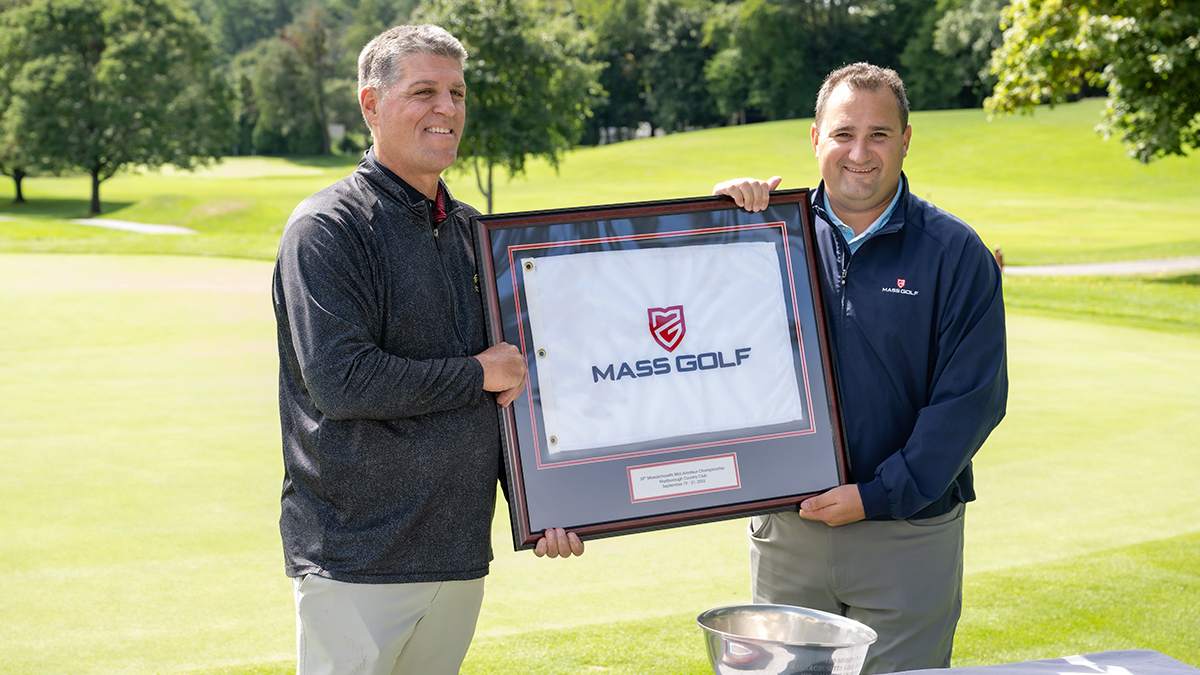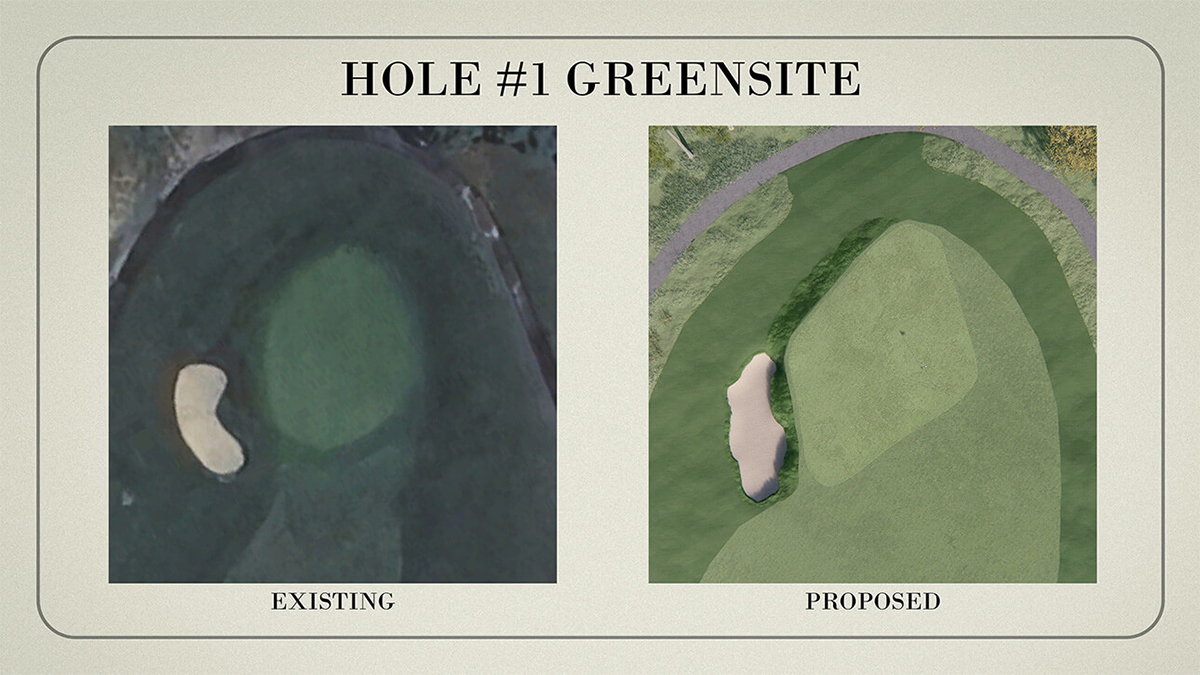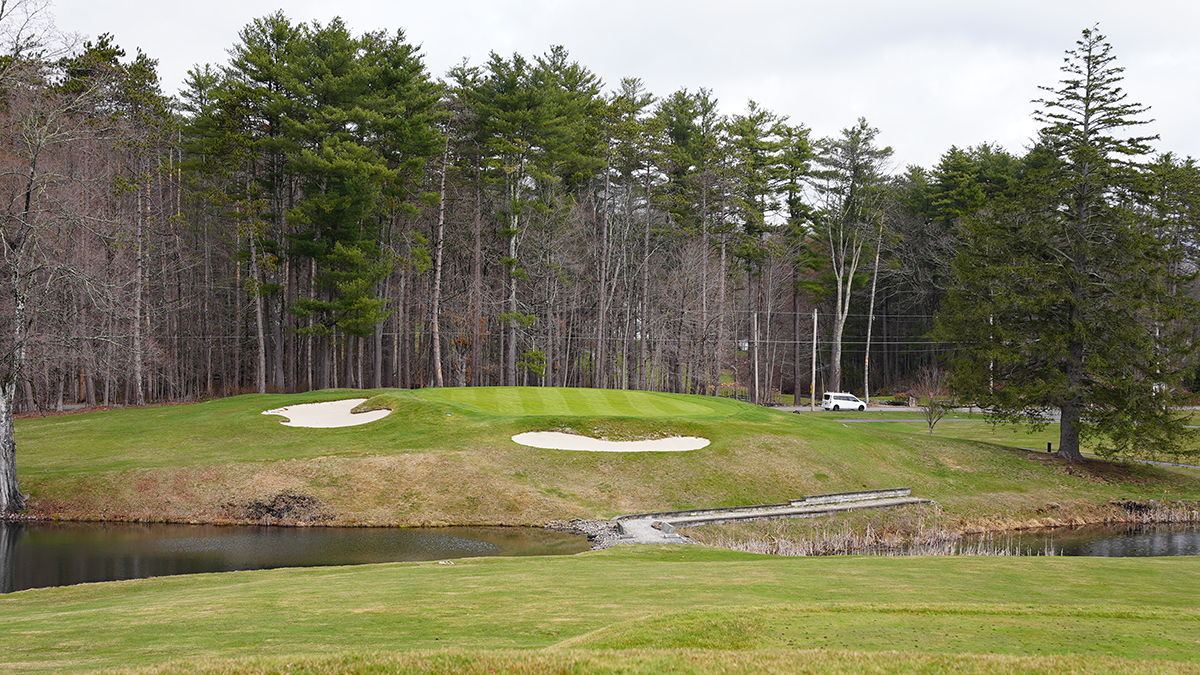By Steve Derderian
sderderian@massgolf.org
SOUTHBRIDGE, Massachusetts – After more than a century tucked among the towering pines above a former mill city in the western part of Worcester County, Cohasse Country Club is making a full push to return to the spotlight.
Designed by Donald Ross in 1916 and opened two years later, the historic nine-hole course has long been known to architecture buffs as a hidden gem. But for longtime PGA Professional Greg Farland, the club’s newly hired head pro, it’s never been hidden.
“There wasn’t a day in my career I didn’t think of Cohasse,” said Farland, who grew up in town playing the course, mowing its greens, and dreaming of a golf life that would eventually span nearly four decades. Now, at age 60, he’s returned to where he first learned the game — a place where he once played with his grandmother Rita, caddied for his dad Jack, and later watched his daughter Grace win club championships.
Farland will attest that Cohasse, with its rugged rock outcroppings, towering trees, and signature mix of strategy and subtleties, is one of Donald Ross’ finest nines. That’s seconded in the book The Finest Nines: The Best Nine-Hole Golf in North America, authored by historian Anthony Pioppi.

But after more than a century, even good bones are in need of revival. With dwindling membership and mounting repairs needed both on and off the course, Cohasse was at a crossroads during the previous golf season, uncertain if there was the desire and willingness to press forth.
Farland, the head pro at Marlborough Country Club for the past 12 years, had come to terms with the idea during the fall that Cohasse might never be part of his career. Even worse, it could be lost to history. Then the phone rang.
Enter Kenneth Uracius. A restoration specialist by trade, Uracius isn’t your typical club owner. He’s the first to admit he’s not a golfer. But he sees Cohasse the way Ross might have: not just as a golf course, but as an institution, vital to both generations of members and the broader golf heritage of the state.
After successfully reviving Hardwick Crossing Country Club, another overlooked outpost in the western part of Worcester County, Uracius turned his attention to Cohasse. His goal? Restore it, honor its history, and reopen its doors to a broader public.
He’s already gotten to work, installing a new bar top and flooring in the aptly-named Ross Tavern. He’s also brought in veteran superintendent Frank Kulig, who spent much of the past decade leading the team at Ludlow Country Club. It was Kulig on the other end of the phone call with Farland, presenting the opportunity he thought might never come. “Because of all my history, I couldn’t have been more interested,” Farland said.

Cohasse’s pedigree extends beyond Ross. Southbridge, once known as the “Eye of the Commonwealth,” has always had working-class roots. The course opened in 1918 as a gift from the Wells family, owners of American Optical, then the world’s largest optics manufacturer, to their employees.
The Wells family brought in the Olmsted Brothers, sons of revered landscape architect Frederick Law Olmsted, to design the surrounding landscape. Their influence remains in the natural flow of the land, the stonework, and the gardens that line the grounds.
Now, in a small but meaningful way, Cohasse is returning the spirit of serving working-class people en masse. Starting this year, the club will adopt a semi-private model. Public play will be available at certain times seven days per week, while full-member events and leagues remain intact.
“My hope is the members open up their arms to the public, and they’re walking in the shop after playing a few times, saying, ‘Hey, Greg, how can I join here?'” Farland said.
In terms of recapturing some of Ross’ brilliance that has ebbed over time, Cohasse has brought in golf course architect Tim Lewis of Tyler Rae and Associates, a firm known for historically faithful restorations, including Woodland GC, Eastward Ho!. The plan is phased, with restoration of holes one through four beginning this fall, followed by six through nine the following year.
One example: the fourth hole, a short, 120-yard par 3 over water with a volcano-shaped green, will have its two greenside traps removed, a change that brings the water much more into play. Meanwhile, the opening hole, a lengthy 427-yard par 4, will regain its original green orientation and size, restoring the intended strategy of using the slope on the right side to feed the approach.
“I remember standing at the first fairway at Cohasse, just starting, thinking, ‘This is amazing. There are three ways to play this hole. That’s when the light bulb must have gone off,” Pioppi once said, reflecting on when he realized the charm of Cohasse. “The kind of hole I was looking at allows for an excellent golfer to play it one way, an average player to play it another way, a new golfer to do it a third way, a way for the longer-hitter, the shorter-hitter — you don’t find that in every golf course.”

Then there’s the third hole, a 202-yard par-3 (sunrise photo) with a small green that punishes anything not precisely struck. “I think the par 3 third is the best hole on the golf course,” Farland said. “If you walk away from the third hole with a par, you are going to win most of your matches.”
After playing the opening four holes, the next three holes across the road are distinct in their own right: A sharp dog-leg left, which plans to stay untouched for the timing being; the straightaway 6th, the lone par-5 on the course; and the 7th, a gettable par-4 with the chateau-style Wells Estate in view throughout the hole.
After crossing a narrow bridge and causeway at the northern end of Wells Pond, the 8th plays up to the highest point on the property, with the steeple of the historic Notre Dame Church downtown in view. The fairway has a shelf running through it, and for those who play it short, it’s a blind shot into a small green. That’ll give players plenty to manage before playing back down the hill toward the clubhouse to an equally-sized green.

All things considered, Cohasse is to be preserved, whatever it takes. In addition to Pioppi’s book, the course was ranked No. 37 in the world by Golf Magazine. To Farland, it’s right up there with Whitinsville Golf Club, a similarly brilliant Ross 9-holer that is in the midst of celebrating 100 years and is located about 25 miles to the east.
“I truly believe that the entire golf course, the routing, the whole landscape, everything about it is right there where it could be just as good,” Farland said.
Farland credits Uracius’s understanding of history as key to earning the members’ trust. “Ken has a great sense of history. He owns a restoration business. So I think his background alone, he’s not a golfer, per se, but having owned Hardwick and having a sense of the history of this place, I think that was a big turn on to the members, and it was a big turn on to me.”
Looking ahead, Farland puts it plainly.
“I think people are understanding of the fact that this could be the greatest thing that ever happened to Cohasse,” he said. “I think I’d rather be the pro at Cohasse Country Club than at Augusta National at this point in my career.”
And as Farland pauses to admire his peaceful hometown course as it prepares for its big return, you believe him.

Mass Golf is a 501(c)3 non-profit organization that is dedicated to advancing golf in Massachusetts by building an engaged and inclusive community around the sport.
With a community made up of over 130,000 golf enthusiasts and over 360 member clubs, Mass Golf is one of the largest state golf associations in the country. Members enjoy the benefits of handicapping, engaging golf content, course rating and scoring services along with the opportunity to compete in an array of events for golfers of all ages and abilities.
At the forefront of junior development, Mass Golf is proud to offer programming to youth in the state through First Tee Massachusetts and subsidized rounds of golf by way of Youth on Course.